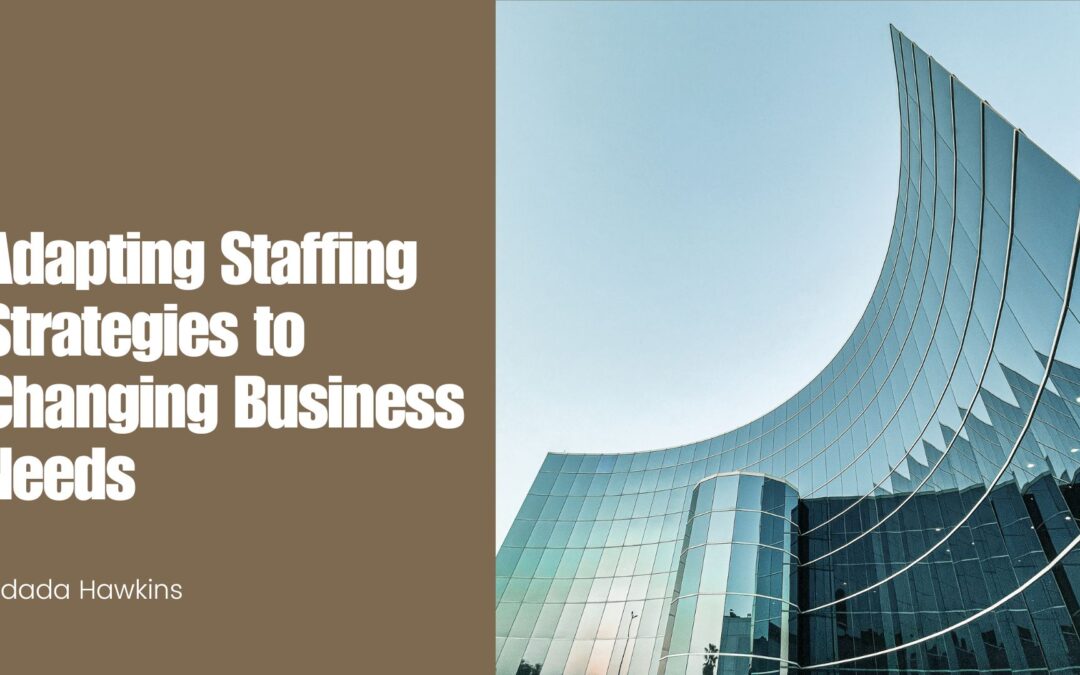Adaptability is the key to survival in today’s rapidly evolving business landscape. Companies that can swiftly adjust to changing market conditions, customer demands, and industry trends are the ones that thrive. One of the critical components of this adaptability is the ability to adapt staffing strategies to meet changing business needs.
Staffing strategies encompass the company’s methods and practices to find, hire, and manage its workforce. These strategies are not static; they must evolve to keep pace with the shifting dynamics of the business environment. Let’s explore why adapting staffing strategies is crucial and how to do so effectively.
Understanding the Need for Adaptation
Businesses face an array of internal and external factors that necessitate shifts in their staffing strategies. Some of the key drivers include:
- Economic Conditions: Economic cycles, such as recessions or periods of growth, can dramatically impact staffing needs. Companies often need to scale back during economic downturns, leading to layoffs or hiring freezes. Conversely, during periods of growth, they may need to expand their workforce rapidly.
- Technological Advancements: The pace of technological change can render specific skills obsolete while creating demand for new ones. Companies must adapt their staffing strategies to have the right talent to leverage emerging technologies.
- Market Dynamics: Changing customer preferences, competitive pressures, and market disruptions can require businesses to pivot their product or service offerings. This may necessitate a realignment of staffing to support these shifts.
- Globalization: Expanding into new markets or navigating international business requires diverse skills and cultural awareness. Companies that are globally expanding must adjust their staffing strategies to accommodate these demands.
- Remote Work Trends: The rise of remote work, accelerated by the COVID-19 pandemic, has forced companies to rethink their staffing models. Hybrid work arrangements and the need for digital collaboration tools have become critical considerations.
Effective Strategies for Adaptation
Adapting staffing strategies to changing business needs is more than a one-size-fits-all endeavor. It requires a holistic approach that encompasses the following key components:
- Regular Assessment: Continuously evaluate your staffing needs in light of evolving business conditions. Regularly assess your workforce’s skills, strengths, and weaknesses to identify gaps and areas for improvement.
- Flexibility: Embrace flexibility in your workforce model. Consider using temporary or contract workers during peak demand periods and allow for agile reassignment of employees when necessary.
- Upskilling and Reskilling: Invest in the development of your existing workforce. Provide opportunities for upskilling and reskilling to provide employees with the skills needed for changing roles and technologies.
- Diversity and Inclusion: Build a diverse workforce that bring many perspectives and skills to the table. A diverse team is equipped to tackle complex challenges and adapt to change.
- Talent Acquisition: Rethink your talent acquisition strategy to attract individuals with the skills and mindset needed for the future. Consider innovative recruitment methods and technology-driven solutions.
- Remote Work Policies: If applicable, establish clear policies that enable your employees to work effectively from various locations. This can enhance your ability to adapt to changing circumstances, such as unexpected disruptions or the need utilize a global talent pool.
- Data-Driven Decision-Making: Leverage data analytics to inform your staffing decisions. Analyzing data on employee performance, market trends, and industry benchmarks can help you make more informed choices.
- Employee Engagement: Engaged employees are more likely to adapt to change and contribute to the company’s success. Prioritize employee engagement through transparent communication, recognition programs, and growth opportunities.
Case Study: Netflix
One company that has successfully adapted its staffing strategies to changing business needs is Netflix. The streaming giant started as a DVD rental-by-mail service but swiftly recognized the shifting landscape toward digital streaming. Here’s how Netflix adjusted its staffing strategy:
- Transition to Streaming: Netflix understood that the future of entertainment was digital streaming. They shifted their staffing resources from managing physical DVD distribution to building a vast library of streaming content.
- Global Expansion: As Netflix expanded globally, it adapted its staffing strategies to accommodate international markets. They hired local talent to create region-specific content and provide customer support in multiple languages.
- Content Production: Recognizing the importance of original content, Netflix heavily invested in hiring top-tier talent in the entertainment industry. This staffing strategy allowed them to create hit shows and movies that set them apart from competitors.
- Remote Work: Netflix’s flexible remote work policies enabled them to maintain productivity during the pandemic. This adaptability allowed employees to work from home without significant disruptions.
Netflix’s ability to pivot and adapt its staffing strategies to align with changing business needs has been instrumental in its prominence in the entertainment industry.
In today’s business landscape, adaptability is essential for long-term success. Companies that can quickly adjust their staffing strategies to meet changing business needs will thrive. As the business environment evolves, the ability to adapt staffing strategies will be a defining factor in determining which companies rise to the top.

